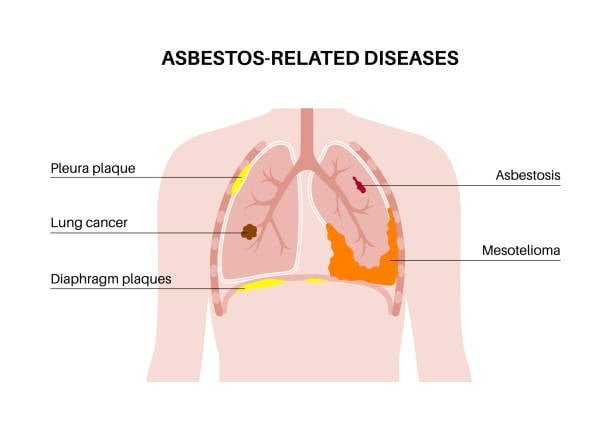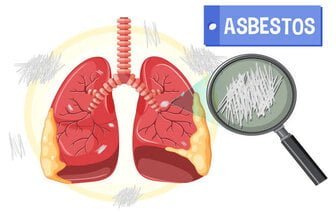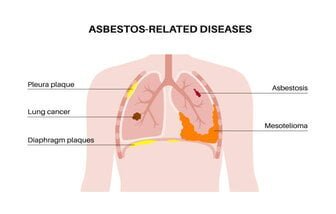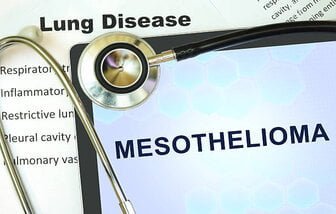Understanding Asbestos-Related Diseases: Risks, Symptoms, and Prevention
Learn about asbestos, its industrial uses, and the serious health risks associated with exposure. Discover how to identify asbestos-containing materials, conduct surveys, and implement safety measures to prevent exposure. Stay informed about regulations and best practices for asbestos management to ensure a safer environment.
Understanding Asbestos-Related Risks and Prevention
Asbestos is a group of naturally occurring fibrous minerals composed of thin, needle-like fibers. These minerals possess excellent heat resistance, tensile strength, and insulating properties, making them highly sought after for various industrial applications.
Historically, asbestos was used extensively in construction materials, automotive parts, and many household products. Its popularity peaked during the mid-20th century, driven by its versatility and cost-effectiveness.
Chemically, asbestos is a silicate mineral, which means it contains silicon and oxygen in its crystal structure. The most common types of asbestos are chrysotile (white asbestos), amosite (brown asbestos), and crocidolite (blue asbestos).
Chrysotile, the most prevalent form, accounts for approximately 90% of the asbestos used in industrial applications. Amosite and crocidolite are less common but are known for their exceptional heat resistance and strength.
In the construction industry, asbestos was commonly used in insulation materials, roofing shingles, ceiling tiles, cement products, and pipe insulation. Its heat-resistant properties made it an ideal component in brake linings, gaskets, and clutch parts in the automotive sector.
Additionally, asbestos could be found in household items such as hairdryers, ironing boards, and even some textiles. The widespread use of asbestos was largely due to its durability and ability to withstand high temperatures without degrading.
Despite its advantageous properties, the health risks associated with asbestos exposure became widely recognized in the latter half of the 20th century. When asbestos-containing materials are disturbed, they release microscopic fibers into the air. Inhalation of these fibers can lead to serious respiratory illnesses, including asbestosis, lung cancer, and mesothelioma.
As a result, many countries have implemented strict regulations to limit asbestos use and ensure safe handling and removal.
Understanding the historical context and widespread application of asbestos is crucial for comprehending its current status as a significant health hazard. This awareness sets the foundation for exploring the associated risks and the necessary preventive measures to mitigate exposure in modern environments.

Asbestos is a group of naturally occurring fibrous minerals composed of thin, needle-like fibers. These minerals possess excellent heat resistance, tensile strength, and insulating properties, making them highly sought after for various industrial applications. Historically, asbestos was used extensively in construction materials, automotive parts, and many household products. Its popularity peaked during the mid-20th century, driven by its versatility and cost-effectiveness.
Chemically, asbestos is a silicate mineral, which means it contains silicon and oxygen in its crystal structure. The most common types of asbestos are chrysotile (white asbestos), amosite (brown asbestos), and crocidolite (blue asbestos). Chrysotile, the most prevalent form, accounts for approximately 90% of the asbestos used in industrial applications. Amosite and crocidolite are less common but are known for their exceptional heat resistance and strength.
In the construction industry, asbestos was commonly used in insulation materials, roofing shingles, ceiling tiles, cement products, and pipe insulation. Its heat-resistant properties made it an ideal component in brake linings, gaskets, and clutch parts in the automotive sector. Additionally, asbestos could be found in household items such as hairdryers, ironing boards, and even some textiles. The widespread use of asbestos was largely due to its durability and ability to withstand high temperatures without degrading.
Despite its advantageous properties, the health risks associated with asbestos exposure became widely recognized in the latter half of the 20th century. When asbestos-containing materials are disturbed, they release microscopic fibers into the air. Inhalation of these fibers can lead to serious respiratory illnesses, including asbestosis, lung cancer, and mesothelioma. As a result, many countries have implemented strict regulations to limit asbestos use and ensure safe handling and removal.
Understanding the historical context and widespread application of asbestos is crucial for comprehending its current status as a significant health hazard. This awareness sets the foundation for exploring the associated risks and the necessary preventive measures to mitigate exposure in modern environments.
Health Risks Associated with Asbestos Exposure
Asbestos exposure poses significant health risks, primarily because its fibers can become airborne and be easily inhaled or ingested. When these microscopic fibers are disturbed, they can lodge themselves in the lungs or other tissues, leading to serious health conditions. Asbestos-related diseases often have long latency periods, meaning symptoms may not appear until decades after exposure.
One of the primary diseases associated with asbestos exposure is asbestosis. This chronic lung condition is characterized by scarring of lung tissue, which leads to progressive difficulty in breathing. Symptoms of asbestosis include shortness of breath, persistent cough, and chest pain. Diagnosis typically involves imaging tests such as X-rays or CT scans, as well as lung function tests. Unfortunately, asbestosis is irreversible and can significantly reduce quality of life.
Lung cancer is another severe consequence of asbestos exposure. The risk of developing lung cancer increases with the duration and intensity of exposure. Symptoms may include a persistent cough, changes in voice, and unexplained weight loss. Early detection through screening is crucial for improving survival rates, though prognosis remains grim for many affected individuals. It’s important to note that smoking can exacerbate the risks of lung cancer in individuals exposed to asbestos.
Mesothelioma, a rare but aggressive cancer, is almost exclusively linked to asbestos exposure. It affects the mesothelium, the protective lining covering internal organs, most commonly the lungs (pleural mesothelioma) but can also impact the abdomen (peritoneal mesothelioma). Symptoms often include chest pain, fluid buildup around the lungs, and abdominal swelling. Diagnosis is challenging and usually involves imaging studies and biopsies. Mesothelioma has a poor prognosis, with most patients surviving only a few months to a few years post-diagnosis.
Statistics highlight the gravity of asbestos-related illnesses. According to the World Health Organization, approximately 107,000 people die annually from diseases caused by occupational asbestos exposure. Real-life examples underscore these statistics, such as the case of a construction worker diagnosed with mesothelioma after decades of handling asbestos-containing materials, emphasizing the importance of preventive measures and stringent regulations.
Identifying and Assessing Asbestos in Buildings
Identifying potential asbestos-containing materials (ACMs) within buildings is crucial for mitigating health risks associated with asbestos exposure. The initial step in this process involves conducting a comprehensive asbestos survey. This survey typically begins with a visual inspection, aimed at locating materials that are likely to contain asbestos. Common areas to examine include insulation around pipes, floor tiles, ceiling tiles, and roofing materials. However, visual identification alone is insufficient, as many ACMs are not distinguishable by appearance.
To confirm the presence of asbestos, samples of suspected materials must be collected and analyzed in a laboratory setting. This testing should only be performed by certified asbestos professionals, who follow strict safety protocols to prevent contamination. The analysis involves techniques such as polarized light microscopy (PLM) or transmission electron microscopy (TEM), which can accurately identify asbestos fibers.
The legal requirements for asbestos assessments vary by region, but generally, regulations mandate that asbestos surveys be conducted before any demolition or renovation activities. Compliance with these regulations ensures the safety of both construction workers and building occupants. In many jurisdictions, only licensed asbestos assessors are authorized to conduct these surveys and provide official reports.
Interpreting the results of an asbestos survey requires a thorough understanding of the findings. The survey report should detail the locations, types, and conditions of any identified ACMs. It will also include recommendations for managing or removing the materials, depending on their state and potential for disturbance. Ongoing monitoring is essential, especially for buildings with intact ACMs that are not immediately removed. Regular inspections help in detecting any deterioration or damage that could release asbestos fibers into the air.
Engaging certified asbestos professionals for both initial assessments and ongoing monitoring ensures compliance with legal standards and contributes to maintaining a safe environment. Proper identification, assessment, and management of ACMs are fundamental steps in protecting public health from the dangers of asbestos exposure.
Preventing Asbestos Exposure and Ensuring Safety
Preventing asbestos exposure is critical to safeguarding health in both residential and occupational settings. The first step in ensuring safety is recognizing materials that may contain asbestos, such as insulation, tiles, and certain cement products. If asbestos presence is suspected, it is crucial to avoid disturbing these materials until they have been tested by a qualified professional.
When handling or removing asbestos-containing materials, employing stringent safety procedures is essential. This includes the use of personal protective equipment (PPE) such as respirators, disposable coveralls, gloves, and safety goggles. Additionally, wetting the materials can help minimize the release of asbestos fibers into the air. It is equally important to seal off the work area to prevent contamination of other parts of the building.
Following regulatory guidelines is non-negotiable in asbestos management. Various agencies, including the Occupational Safety and Health Administration (OSHA) and the Environmental Protection Agency (EPA), provide comprehensive directives on the safe handling and disposal of asbestos. Compliance with these regulations ensures that the risk of exposure remains minimal and that legal obligations are met.
Asbestos management plans are indispensable tools in both workplaces and homes. These plans outline procedures for identifying, monitoring, and managing asbestos-containing materials. In workplaces, regular training and updates for employees on asbestos safety protocols are essential components of these plans. For homeowners, particularly during renovations, it is advisable to consult with professionals who can safely handle and remove asbestos if found.
Numerous resources are available for those seeking further information and support. Government agencies such as the EPA and the National Institute for Occupational Safety and Health (NIOSH) offer extensive guidance on asbestos safety. Additionally, certified asbestos abatement services can provide expert assistance in identifying and mitigating asbestos risks.
By adhering to these practical measures and leveraging available resources, individuals can significantly reduce the dangers posed by asbestos, ensuring a safer environment for all.
Identifying potential asbestos-containing materials (ACMs) within buildings is crucial for mitigating health risks associated with asbestos exposure. The initial step in this process involves conducting a comprehensive asbestos survey. This survey typically begins with a visual inspection, aimed at locating materials that are likely to contain asbestos. Common areas to examine include insulation around pipes, floor tiles, ceiling tiles, and roofing materials. However, visual identification alone is insufficient, as many ACMs are not distinguishable by appearance.
To confirm the presence of asbestos, samples of suspected materials must be collected and analyzed in a laboratory setting. This testing should only be performed by certified asbestos professionals, who follow strict safety protocols to prevent contamination. The analysis involves techniques such as polarized light microscopy (PLM) or transmission electron microscopy (TEM), which can accurately identify asbestos fibers.
The legal requirements for asbestos assessments vary by region, but generally, regulations mandate that asbestos surveys be conducted before any demolition or renovation activities. Compliance with these regulations ensures the safety of both construction workers and building occupants. In many jurisdictions, only licensed asbestos assessors are authorized to conduct these surveys and provide official reports.
Interpreting the results of an asbestos survey requires a thorough understanding of the findings. The survey report should detail the locations, types, and conditions of any identified ACMs. It will also include recommendations for managing or removing the materials, depending on their state and potential for disturbance. Ongoing monitoring is essential, especially for buildings with intact ACMs that are not immediately removed. Regular inspections help in detecting any deterioration or damage that could release asbestos fibers into the air.
Engaging certified asbestos professionals for both initial assessments and ongoing monitoring ensures compliance with legal standards and contributes to maintaining a safe environment. Proper identification, assessment, and management of ACMs are fundamental steps in protecting public health from the dangers of asbestos exposure.
Preventing asbestos exposure is critical to safeguarding health in both residential and occupational settings. The first step in ensuring safety is recognizing materials that may contain asbestos, such as insulation, tiles, and certain cement products. If asbestos presence is suspected, it is crucial to avoid disturbing these materials until they have been tested by a qualified professional.
When handling or removing asbestos-containing materials, employing stringent safety procedures is essential. This includes the use of personal protective equipment (PPE) such as respirators, disposable coveralls, gloves, and safety goggles. Additionally, wetting the materials can help minimize the release of asbestos fibers into the air. It is equally important to seal off the work area to prevent contamination of other parts of the building.
Following regulatory guidelines is non-negotiable in asbestos management. Various agencies, including the Occupational Safety and Health Administration (OSHA) and the Environmental Protection Agency (EPA), provide comprehensive directives on the safe handling and disposal of asbestos. Compliance with these regulations ensures that the risk of exposure remains minimal and that legal obligations are met.
Asbestos management plans are indispensable tools in both workplaces and homes. These plans outline procedures for identifying, monitoring, and managing asbestos-containing materials. In workplaces, regular training and updates for employees on asbestos safety protocols are essential components of these plans. For homeowners, particularly during renovations, it is advisable to consult with professionals who can safely handle and remove asbestos if found.
Numerous resources are available for those seeking further information and support. Government agencies such as the EPA and the National Institute for Occupational Safety and Health (NIOSH) offer extensive guidance on asbestos safety. Additionally, certified asbestos abatement services can provide expert assistance in identifying and mitigating asbestos risks.
By adhering to these practical measures and leveraging available resources, individuals can significantly reduce the dangers posed by asbestos, ensuring a safer environment for all.
Asbestosis Symptoms
Asbestosis is a chronic lung disease primarily caused by prolonged exposure to asbestos fibers. Asbestos, once widely used in construction and various industries due to its fire-resistant properties, poses significant health risks when its fibers are inhaled.
Asbestos-Related Diseases
Learn about asbestos, its industrial uses, and the serious health risks associated with exposure. Discover how to identify asbestos-containing materials, conduct surveys, and implement safety measures to prevent exposure.
Asbestos Lung Cancer
Once inhaled, asbestos fibers can lodge in the lung tissues, leading to inflammation and scarring over time. This can culminate in serious health issues, the most severe of which include asbestosis, mesothelioma, and asbestos lung cancer.
Asbestos Inhalation
Asbestos is a hazardous mineral known for its durability and heat resistance, historically used in various industries. Inhalation of asbestos fibers can lead to severe health issues such as asbestosis, lung cancer, and mesothelioma.
What is Mesothelioma
The most common sites for this malignancy are the pleura (lining of the lungs), peritoneum (lining of the abdomen), and pericardium (lining of the heart). Due to its aggressive nature, mesothelioma poses significant challenges in diagnosis and treatment
Asbestos Compensation
Learn about the dangers of asbestos exposure, the legal framework for seeking compensation, and the types of claims available for asbestos-related illnesses like mesothelioma and asbestosis. Discover how to navigate the claims process
Asbestos & Your Health
Learn about asbestos, a fibrous mineral widely used in construction until it was banned in the UK in 1999 due to significant health risks. Discover the serious conditions such as asbestosis, lung cancer, and mesothelioma caused by asbestos exposure.
Let's Work Together
Please complete the form below and someone from the Total team will be in touch to discuss your asbestos requirements For urgent needs, our customer support team is available through various channels. You can reach us via phone during business hours, or through our dedicated email support. We are committed to providing timely assistance and ensuring your asbestos concerns are addressed promptly and professionally.







